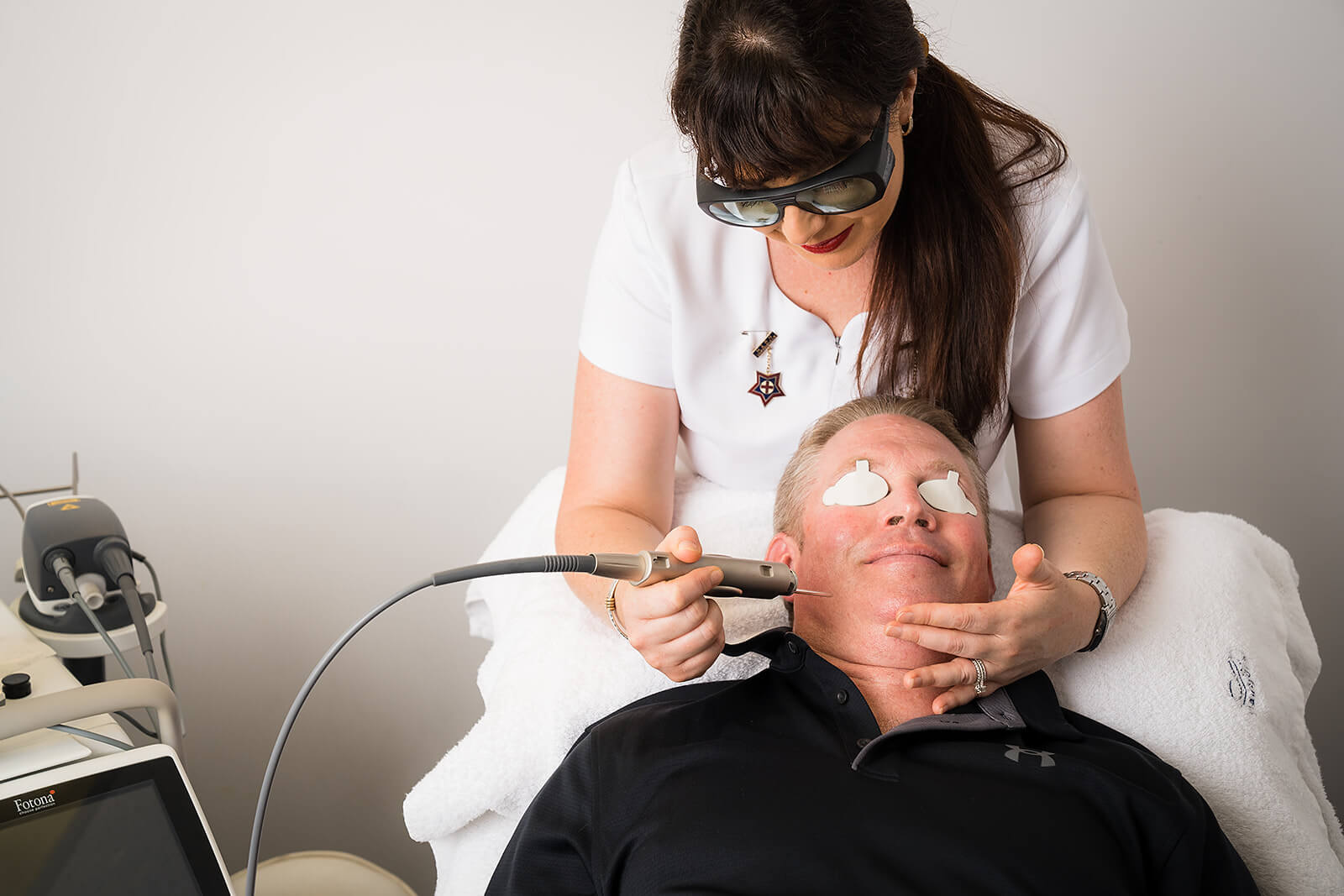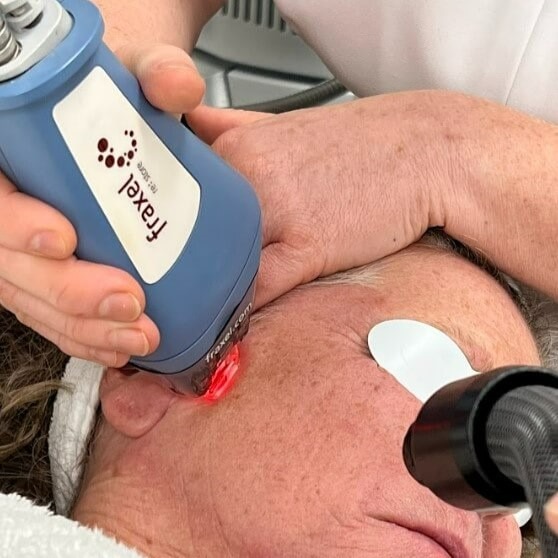

Reviewed by Dr. Ian S. Little
Laser treatments are an effective way to treat skin blemishes and promote anti-ageing. But how much do you really know about laser skin treatments? We’ll teach you about the different types of lasers, the pros & cons of each, and help you determine which laser is right for you.
Laser skin treatment is a non-surgical cosmetic procedure used to remove blemishes, signs of ageing, and scarring while improving your overall skin quality. The lasers destroy damaged cells and stimulate collagen production, enabling healthy skin cells to grow and repair the target area.
There are two primary goals of laser skin treatments:
1. To remove blemishes, creating a smooth, even complexion. By removing blemishes such as redness, pigmentation, lines & wrinkles, scarring, and damaged veins with directed laser therapy, your skin will look naturally younger and healthier.
2. To transform thin, sagging skin into tighter, thicker, and healthier skin. This is done through biostimulation, a process that promotes collagen & elastin production, helping healthy cells regenerate faster.
While the end goal is ultimately natural, younger-looking skin, there are so many other benefits to laser skin treatment. Let’s explore a few of them.

Non-invasive laser therapies are a great alternative for those who want to look good without all of the needles, surgeries, and recovery times.
There are four major types of laser skin treatment that are currently used by cosmetic clinics: ablative, non-ablative, fractionated, and unfractionated. Here’s a more in-depth look at each type.
Most laser skin treatments are classified as ablative or non-ablative – this is how they differ:
Ablative laser treatments target the top layer of skin and remove blemishes & damaged tissue by vaporising cells. It’s the more invasive option of the two and usually requires a local anaesthesia or topical numbing cream to prevent discomfort. With extreme accuracy, it can even be used to target specific lines & wrinkles on your face. Some examples of ablative laser treatments include:
Non-ablative laser treatments target deeper layers of skin tissue by using different wavelengths, damaging cells rather than vaporising them. These are far less invasive options than ablative treatments because they don’t harm the skin and recovery times are minimal. Some examples of non-ablative laser treatments include:
Ablative and non-ablative laser treatments can further be classified as fractionated or non-fractionated. They are also known as fractional or non-fractional treatments.
Fractionated treatments target a portion of the treatment surface area as the laser is fired through a grid to produce multiple, pin-point light beams. The highly-targeted approach limits damage to the skin while still producing effective results. And though multiple sessions are required to treat the area, the recovery time is minimal, meaning you’ll be back on your feet quicker.
Non-fractionated treatments target the entire area at once with a single light beam. The high-intensity treatment typically requires just one session, but more recovery time is needed, often 3-5 days depending on your condition.
Oftentimes, we combine these different laser approaches to help you achieve your desired look while also balancing skin sensitivity, recovery times, and more. Ultimately, the decision will be up to you and our doctors, but here is the general breakdown:
These are the major laser skin treatments. But intense pulse light therapy (IPL) and radiofrequency (RF) therapies are thrown into the laser conversation – we’re here to set the record straight.
IPL is another way to remove blemishes and promote anti-ageing qualities, but it’s not a laser treatment. It uses a different type of light to scatter several short bursts of light at the target area. It’s most effective at reducing pigmentation spots, repairing sun damage, eliminating redness, and improving skin texture. IPL is commonly referred to as a photofacial, which is a type of IPL therapy that aims to improve the overall skin appearance, much like a standard facial.
Radiofrequency, also known as RF skin tightening, heats deep layers of skin with RF waves that stimulate collagen & elastin production. These chemicals naturally tighten skin and reduce the appearance of wrinkles. RF is different from laser skin treatments, but it’s an effective treatment option for removing skin blemishes. It’s approved by the FDA and is far less dangerous than X-rays and other radiation treatments.
We offer both of these treatment types at Transform Clinic, even combining them with our Elōs® Fotofacial RF for a rejuvenating skin texture therapy.
There are pros and cons to each type of laser treatment. At Transform Clinic, we’ll create a custom plan combining lasers and other cosmetic treatments to give you the results you’re looking for. Your treatment plan will depend on your:
Speak with your nurses to see if your skin is a good fit for laser treatment.
Though lasers are designed to improve skin quality, there are risks associated with these treatments.
And do I need multiple treatments? Recovery times and treatment frequencies vary based on the severity of your condition and laser type. Here’s what you can expect:
Recovery time for laser skin treatments vary from 0 days to 7 days based on treatment intensity and your body’s reaction to the lasers. As a rule of thumb, more intense lasers require more downtime. But they also deliver faster results with fewer treatments, so you must decide how much recovery plays a role in your beauty goals.
The best results are achieved with a series of treatments, though the amount will vary based on the treatment course and results from the first session. Generally, we recommend about 4 treatments for ablative laser and 6-8 for non-ablative.
Ready to achieve your beauty goals? Schedule your free consultation to find out which laser treatment plan is right for you!
